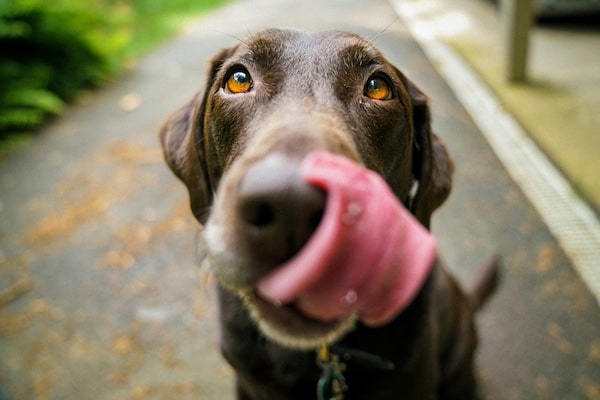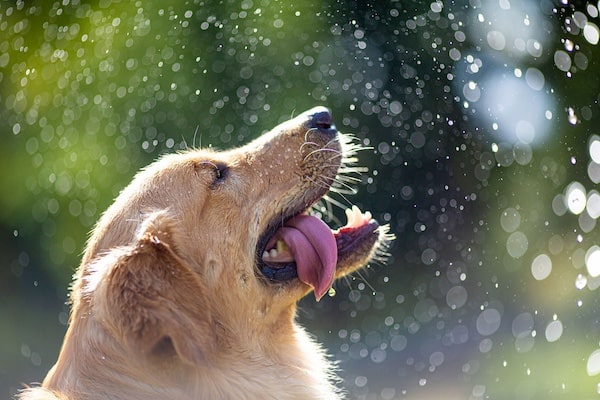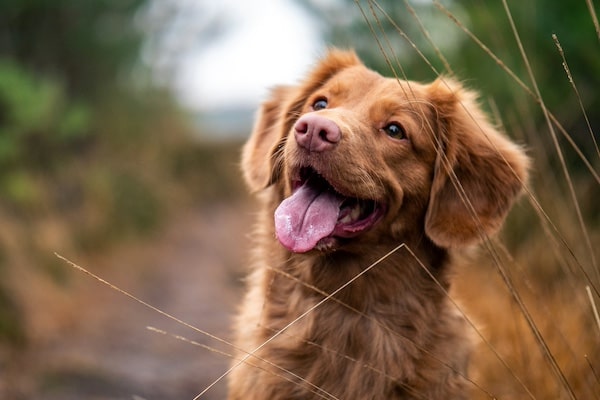Diving into the world of the Japanese Chin reveals a breed distinguished by its elegance and companionable nature. This guide aims to unpack the multifaceted personality and physical traits of this charming dog, providing essential insights for anyone considering adding a Japanese Chin to their family.
With their distinct appearance and aristocratic demeanor, these dogs are more than just pets; they are a study in grace and adaptability. Future owners will find valuable advice on care, training, and how to harness the serene disposition of the Japanese Chin to achieve a harmonious living arrangement. Understanding these aspects ensures a rewarding relationship with this delightful breed.
Japanese Chin – Size & Life Expectancy
Height
8-11 inches
Weight
7-11 pounds
Life Expectancy
10-12 years
About the Japanese Chin
The Japanese Chin stands as a breed enveloped in both mystique and regal history, tracing its origins back to the aristocratic circles of ancient Asian cultures. Although named for Japan, this breed likely began its journey in China, serving as a prized possession among Chinese nobility before being gifted to the Japanese imperial family. These dogs were not mere pets but symbols of imperial favor and diplomacy, often exchanged between royals and nobles as precious tokens of goodwill and esteem.
In Japan, the Chin was elevated to a status of revered companion, often found in the luxurious laps of court ladies and within the secluded walls of palaces. Their role transcended that of a companion; they were cherished as creatures of spiritual significance, believed to bestow good luck. The breed’s distinct appearance, with its wide eyes and luxurious coat, complemented its serene and noble behavior, embodying the aesthetic ideals of the culture.
Transition to Western Recognition
The allure of the Japanese Chin spread beyond Eastern borders during the 1800s when these dogs began to appear in Europe and America, brought back by traders and returning diplomats. Their exotic looks and gentle demeanor quickly captivated Western dog enthusiasts, making them a fashionable choice for the elite. By the late 19th century, the Japanese Chin had established itself firmly within the circles of Western dog shows, admired for its elegance and distinctive personality.
The Japanese Chin Today
Today, the Japanese Chin enjoys a status as a beloved companion dog, cherished not just for its historical background but for its qualities as an adaptable and affectionate pet. Their small size and minimal exercise needs make them ideal residents of both apartments and homes with limited space. With their calm and pleasant temperament, Chins blend seamlessly into various family dynamics, often forming strong bonds with their owners.
Despite their royal lineage, Japanese Chins are not as widely recognized or as prevalent as other toy breeds like Poodles or Shih Tzus. However, they maintain a dedicated following, particularly among those who appreciate the breed’s quiet charm and relatively low-maintenance lifestyle. Breed enthusiasts often participate in dog shows and breed clubs, promoting the unique attributes of the Chin and working to maintain its standards and health.
Typical Owners and Modern Challenges
The typical owners of a Japanese Chin are those who value a low-energy but highly companionable pet. They are particularly favored by the elderly and those in urban settings, where their polite indoors behavior and size are advantageous. However, the breed’s delicate health, including issues like heart murmurs and eye problems, requires owners to be proactive and attentive in managing their care.
Despite these challenges, the Japanese Chin continues to be a symbol of elegance and companionship in the modern dog lover’s world. Their story is a testament to the breed’s enduring appeal and the timeless connection between humans and their canine companions. Whether nestled quietly in a lap or performing with grace in a show ring, the Japanese Chin remains a delightful blend of history, beauty, and affectionate loyalty.
Traits & Characteristics of the Japanese Chin
- Elegant Appearance: Characterized by a silky, flowing coat, distinctive pushed-in face, and feathered tail that curls over the back.
- Compact Size: A small breed, ideal for apartment living or homes with limited space.
- Loyal Companions: Known for their strong attachment to their owners, often preferring the company of humans.
- Quiet Nature: Typically less yappy than other small breeds, making them well-suited for a peaceful home environment.
- Intelligent and Trainable: Despite their independent streak, they are smart and can be trained with the right approach.
- Playful Personality: Enjoy interactive play and can be quite entertaining with their antics.
- Low Exercise Needs: Requires minimal physical activity, making them perfect for less active owners or those with mobility issues.
Owning a Japanese Chin
The Japanese Chin, with its noble history and distinct personality, makes a delightful companion for those who appreciate a quiet, affectionate pet that carries a touch of regal dignity. As prospective owners consider this breed, understanding the specific needs and characteristics of the Japanese Chin can ensure a harmonious relationship. Here is a guide to essential aspects of caring for a Japanese Chin, from health to training.
Health
The overall health of the Japanese Chin is generally good, but like all breeds, they are prone to certain health conditions. Common issues include heart problems, particularly mitral valve disease, and respiratory issues due to their brachycephalic (flat-faced) structure. Eye problems, such as cataracts and progressive retinal atrophy, can also occur. Regular veterinary check-ups are crucial to catch any early signs of these conditions. Owners are advised to maintain a healthy weight for their Chins, as obesity can exacerbate health problems, especially respiratory and joint issues.
Exercise
Despite their small size, Japanese Chins enjoy a moderate amount of activity and benefit from regular, light exercise. A daily walk combined with some playtime is typically sufficient to keep them healthy and happy. However, due to their flat faces, care must be taken to avoid strenuous exercise, especially in hot or humid weather, as they can have difficulty breathing. Activities should be tailored to avoid overexertion, and owners should watch for signs of fatigue or distress.
Grooming
The luxurious double coat of the Japanese Chin requires regular grooming to maintain its condition and prevent matting. Brushing several times a week is recommended, with a gentle approach to handle their soft, fine fur. They are seasonal shedders, and during these times, more frequent grooming may be necessary to manage shedding. Besides coat care, regular attention to dental hygiene, nail trimming, and ear cleaning will keep the Chin looking its best and prevent common health issues.
Nutrition
Feeding the Japanese Chin a balanced diet formulated for small breeds with moderate energy levels is key. These dogs do well on high-quality commercial foods but can also benefit from safely prepared homemade meals under veterinary guidance. It’s important to avoid foods that can cause allergies or sensitivities in small breeds. Also, due to their risk of obesity, careful monitoring of portion sizes and treat intake is crucial. Avoid giving foods that are toxic to dogs, such as chocolate, grapes, and onions.
Training
Training a Japanese Chin can be a rewarding experience, as they are intelligent and eager to please. However, they can sometimes be stubborn, so patience and consistency are vital. Positive reinforcement techniques, such as praise and treats, are the most effective methods for training this breed. Early socialization and puppy training classes are recommended to help the Chin develop into a well-adjusted adult. Regular, short training sessions will keep the Chin engaged and prevent boredom, helping to strengthen the bond between pet and owner.
By understanding and catering to the specific needs of the Japanese Chin, owners can enjoy a fulfilling relationship with these charming and dignified companions.
The Japanese Chin Standard
The Japanese Chin, a breed marked by its aristocratic bearing and distinctive expression, adheres to a breed standard that defines the ideal qualities judges look for in show dogs. This standard encompasses physical traits, demeanor, and overall appearance, ensuring the breed retains its historical and cultural essence.
Appearance and Size
A small, well-balanced dog, the Japanese Chin ideally weighs between 4 to 9 pounds and stands about 8 to 11 inches at the shoulder. The body of the Chin is compact with a broad chest and a level back. The breed exhibits a squarish body, meaning its length and height are proportionally similar.
Head
The head of the Japanese Chin is one of its most recognizable features, characterized by a broad, slightly rounded skull. The face should display a distinct look with wide-set, large, dark eyes that convey an expression of both importance and sweetness. The muzzle is short, broad, and well-cushioned with a clearly defined stop. Ears are small, V-shaped, and set far apart, covered with a generous amount of hair.
Coat and Color
The coat is long, straight, and silky, flowing over the body with a notable absence of an undercoat. Feathering adorns the ears, neck, thighs, and tail, enhancing the breed’s elegant outline. Japanese Chins are found in a variety of colors, with the most common being black and white, or red and white. The markings are important, with a symmetrical facial mask being highly desirable.
Gait
Movement in the Japanese Chin is another critical aspect, where the breed standard looks for a stylish, lively, and straight gait. The movement should convey both the breed’s daintiness and its strong, capable body structure.
Temperament
Above all, the temperament of the Japanese Chin should reflect its heritage as a companion dog. It is expected to be alert, intelligent, and with a demeanor that oscillates between regal aloofness and playful mischief. The Chin should interact with calm assurance and exhibit charm in its behavior, a trait that has endeared this breed to many over the centuries.
Adhering to these breed standards ensures the Japanese Chin remains true to the characteristics that have made it a cherished companion through history. This breed standard not only preserves the physical and temperamental traits that define the Chin but also upholds the tradition of the breed as a symbol of elegance and nobility in the canine world.
Japanese Chin – FAQ
Explore the enchanting world of the Japanese Chin through our comprehensive FAQ. Whether you’re a prospective owner or a curious enthusiast, this guide will answer all your questions about the breed’s characteristics, care requirements, and more, helping you understand and appreciate these delightful companions.
Alternatives to a Japanese Chin
Several dog breeds share similar size, traits, and characteristics with the Japanese Chin, making them appealing to those who favor small, companionable pets. Among these, the Pekingese presents a notable comparison. Like the Japanese Chin, Pekingese dogs boast a royal history, having been treasured by Chinese nobility. They feature a distinct flat face, a luxurious coat, and a calm demeanor that makes them excellent lap dogs.
The Shih Tzu is another breed that mirrors the Japanese Chin in many respects. Originating from similar regions in Asia, Shih Tzus are known for their friendly nature and beautiful, flowing coats. They enjoy being close to their owners and, much like the Japanese Chin, require regular grooming to maintain their appearance.
Similarly, the Cavalier King Charles Spaniel, though slightly larger, shares the affectionate and gentle traits of the Japanese Chin. Cavaliers are known for their expressive eyes and soft, wavy coats. They thrive on human companionship and are highly adaptable to various living environments, just like the Japanese Chin.
Each of these breeds, while having unique qualities, exhibits the key characteristics of being great companions, suitable for families or individuals living in smaller spaces, and they all demand a certain level of care and affection. This makes them comparable choices for those drawn to the charm of the Japanese Chin.





